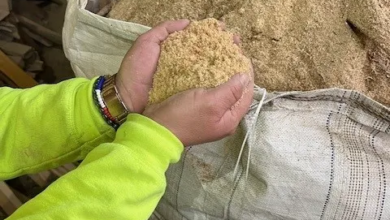Rotary Engraving Noses Part 1: Challenges
The solution to mark a substrate has its own set of challenges. Be on the lookout for part 2 and 3, which cover advantages and types of noses.
The main issue with rotary engraving is the combination of a new engraving system operator and inconsistent depth of engraving. A nose, with and without chip removal, attaches to the lower micrometer of the spindle and is held in by a collar nut. It is designed to ride on the engraving surface with a cutter extending slightly beyond the nose bottom to penetrate the engraving material. In theory, the nose is a perfect solution to accomplish consistent engraving. But in fact, it has its challenges.
- A major issue is shadowing or ghosting. This is the scratching of the material by the nose or the chips being cut/ground back into material by the nose. A new nose, lighter down pressure, using outdoor material, and a good chip removal system often solves these issues.
- Noses also interfere with clamps and edge rulers. The nose is typically Delrin (plastic), fiber, SST, or a polished steel.
- A nose requires extending the cutter length, making it weaker, and produces more wear on the typical simple spindle in our industry.
- Engraving wide multi-line letters may allow the nose to engrave a deep depth as it falls into the engraved cavity. I call this “nose dive.”
- Noses are expensive, wear out, messy, and just cumbersome for some.
-Fred Schwartz, Quality One Engravers




